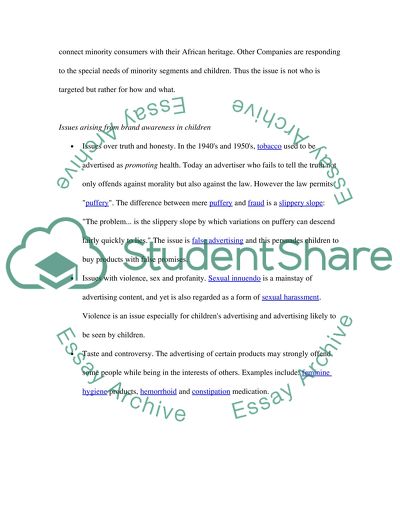Cite this document
(“Issues Arising From Brand Awareness in Children Research Paper”, n.d.)
Issues Arising From Brand Awareness in Children Research Paper. Retrieved from https://studentshare.org/sociology/1500107-marketing-ethics-master-essay
Issues Arising From Brand Awareness in Children Research Paper. Retrieved from https://studentshare.org/sociology/1500107-marketing-ethics-master-essay
(Issues Arising From Brand Awareness in Children Research Paper)
Issues Arising From Brand Awareness in Children Research Paper. https://studentshare.org/sociology/1500107-marketing-ethics-master-essay.
Issues Arising From Brand Awareness in Children Research Paper. https://studentshare.org/sociology/1500107-marketing-ethics-master-essay.
“Issues Arising From Brand Awareness in Children Research Paper”, n.d. https://studentshare.org/sociology/1500107-marketing-ethics-master-essay.


